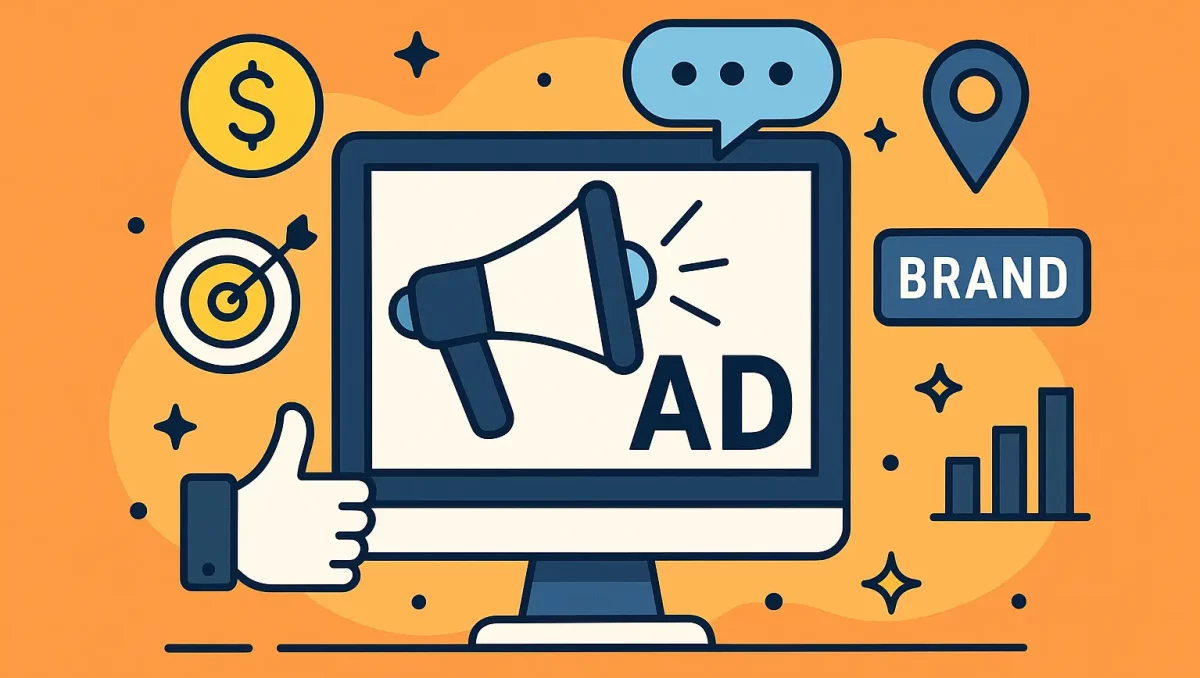I’m Kayla. I run marketing for a home goods shop called Maple & Grain. We sell shelves, storage bins, and little things that make a house feel calm. I used to think banner ads were a waste. Too loud. Too busy. You scroll past them, right?
If you want a clear look at what separates winning creative from the sea of duds, these banner advertising case studies break down real campaigns step by step.
Before you write display off completely, check out this candid breakdown of another marketer’s journey: I Hired a Display Advertising Agency—Here’s What Actually Happened. It mirrors a lot of the surprises I’m about to share.
Well, I hired a display ad agency anyway. I was wrong. Not fully wrong. But enough to say this: banners can pull their weight when the setup is clean and the team listens.
Why I Even Called Them
We were heading into summer and then the Black Friday build-up. My small team was tired. Search was fine. Social was okay. But we needed reach. I also needed guardrails for brand safety and all the privacy stuff that keeps changing. I didn’t want our ads on weird sites.
If you’re weighing different shops (especially in California), you might like this boots-on-the-ground review of Santa Barbara advertising firms. It helped me frame my own vetting questions.
So I brought in Highbeam Media (Denver). They work in DV360 and The Trade Desk. They promised clear reports, weekly calls, and fast creative help. I liked that they sounded sure but not slick.
The First Week Felt Like Spring Cleaning
They started with a tech check:
- GA4 goals looked messy, so they fixed the thank-you page event.
- UTM tags were all over the place. They set a neat format.
- Our pixel fired twice on one page. They found it. We fixed it.
Then we agreed on creative sizes: 300×250, 300×600, 728×90, 320×50. We kept it simple: clean wood textures, clear prices, and short copy. They pushed me to test HTML5 motion vs. static. I said sure, but I asked for fast load times. (Good call, because our shoppers leave if a page takes more than 3 seconds.)
They also added brand safety lists and viewability filters (MOAT and IAS). That cut junk. It did raise CPM a bit, but I slept better.
Quick aside: if your business doesn’t shy away from mature placements—or if you just want to know exactly which domains to blacklist—this regularly updated directory of free sex sites lays out the highest-traffic adult platforms so you can either target them on purpose or exclude them with confidence.
Similarly, advertisers looking for a hyper-local pulse on adult inventory in North Carolina can skim this city-specific profile of Erotic Monkey Wilmington to see traffic volumes, ad-friendliness, and decide whether it belongs on the inclusion or exclusion side of their brand-safety list.
Bonus reading: If you’re actively experimenting across channels, this walkthrough on testing the best internet advertising so you don't waste your budget shows solid frameworks for keeping spend tight.
Real Example 1: Cart Abandoners, Week 2
We ran a retargeting group for people who added shelves to cart but didn’t buy.
- Target: past 14 days, frequency cap 3 per 24 hours
- Creative: static product shots vs. simple motion
- Placements: open web, heavy on home and DIY sites
What happened? CTR went from 0.18% (our old GDN setup) to 0.42%. CPA dropped from $38 to $21 over two weeks. Motion didn’t win. Static with a soft shadow and a big “Ships Free” tag did. Funny how that works.
Small snag: on day 5, I saw our ad eight times on the same site. Too much. I flagged it. They lowered the cap and cut two domains. Sales held. Annoyance gone.
Real Example 2: Top-of-Funnel for Summer Patio Sale
We needed new people. They set up private deals (PMPs) with Houzz and a few home blogs. CPM rose to $8.50 vs. $4.20 on the open web, but viewability jumped to 72%. CTR stayed meh at 0.25%. I almost pulled it. But then the view-throughs hit.
Quick note: a view-through is when someone sees an ad, doesn’t click, but buys later. Not perfect, I know. But we ran a clean test. We held out Utah for two weeks. Same time, same promo, same search and social. Utah had no display. The rest had display.
Result: the states with display saw a 13% lift in revenue for the patio line. Utah lagged. That told me the banners nudged folks who later searched our name.
If paid search is also on your to-fix list, you’ll appreciate this no-fluff case study on what actually worked—and flopped—when advertising supplements on Google.
Real Example 3: Local Showroom Weekend
We opened a small showroom near Austin. I wanted foot traffic for a Saturday event. They set a geofence around two nearby markets and a plant shop. Phones in that area got our mobile banners on Friday and Saturday morning. We tracked sign-ups with a short form and QR at the door.
- Spend: $1,600 over 3 days
- Cost per sign-up: $9.40
- In-store sales: 43 orders tied to the QR
Was it perfect? No. We saw a spike in form spam on Friday night. They added a simple check (one-click box) and it stopped. Also, some folks didn’t want location ads. We kept it tight and short. Honest note: small geo tests are cute but noisy. Treat them as a read, not a rule.
The Good Stuff They Did
- They actually tested. Two headlines. Two colors. One big idea at a time. Clean.
- Their Looker Studio report didn’t make my eyes cross. I could see spend, CPA, CTR, and view-throughs by line item.
- They were quick with creative swaps. Once, I sent a new price grid at 3 p.m.; banners were live by the next morning.
- Brand safety felt strong. We had a short “blocked” list, and they checked it weekly.
- They pushed me on landings. Our collection page was slow on mobile. We cut a hero video. Bounce dropped. Conversions rose.
The Stuff That Bugged Me
- The fee was 15% of media plus $1,000 for creative in month one. Not small for a mid-size shop.
- View-throughs got loud. Their model gave too much credit at first. We reset the window to 7 days for remarketing and 1 day for prospecting. Sanity returned.
- A few placements looked spammy. You know those pages with 10 ads and tiny text? I saw our logo there. I sent screenshots. They excluded them and raised pre-bid filters.
- Monthly minimums. We had to keep spend above $10k to keep the PMPs. Some months, that was tight.
Money Talk (Real Numbers)
Over 90 days, we spent $22,400 on display.
- Retargeting CPA: $19.80 (last click)
- Prospecting CPA: $54.10 (last click), $34.60 when we include view-throughs
- Blended ROAS for display-assist: 3.1
- Lift test (Utah holdout): 13% revenue lift on patio line, 7% on storage
For numbers nerds who like benchmarks before green-lighting a fresh channel, this set of in-depth performance marketing case studies offers a solid yardstick.
Did search and email still win on last click? Yes. But display fed the top, and it warmed up folks who were on the fence. It wasn’t magic. It was a steady push.
Little Lessons I Didn’t Expect
I thought flashy motion would crush it. It didn’t. Static with clean edges won more often than not.
I thought tiny CTA buttons looked classy. They looked classy and got fewer clicks. We went bigger. Sales went up. Lesson learned.
I thought broad audience segments would waste money. Some did. But a “home organizers” interest group from a publisher deal paid for itself in week one. So, test, but set floors.
Also, I learned to love frequency caps. Too few hits? People forget. Too many? They get mad. Our sweet spot was 3 per 24 hours for prospecting and 5 for remarketing.
Who Should Hire a Display Agency?
If you're still searching for the right partner, Hunt Mads curates a shortlist of display agencies with proven e-commerce results.
And if you’re curious how another retailer fared when they **did

